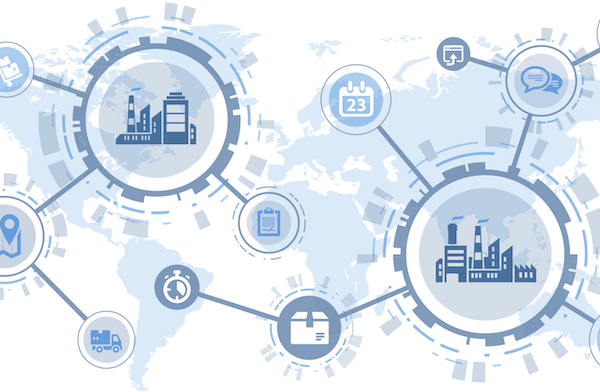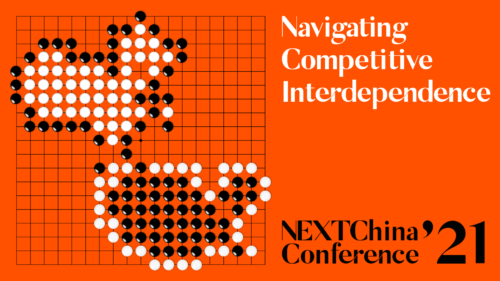How to build a sustainable supply chain amid the U.S.-China trade war? Find out the answer at the NEXT China conference.

The escalating tit-for-tat trade war between the United States and China has been shaking up supply chains all over the world. For companies that are involved in trade between the two countries, they have to deal with not only frequently changing tariff rates, but also the general uncertainty swirling around how both sides, arguably the biggest two superpowers in the world, will position themselves in the global economy in the long run.
To shed light on this topic, The China Project recently talked to Dragon Innovation, a hardware consulting firm that has been a manufacturing partner to hundreds of companies since its establishment in 2009. Representatives from Dragon Innovation, including its CEO, Scott N. Miller, are slated to appear at The China Project’s NEXT China conference on Thursday, November 21, for a breakout session on how to optimize supply chains in China.
1. How is the ongoing trade dispute between China and the U.S. impacting classifications on manufactured goods from China?
The Harmonized Commodity Description and Coding System (Harmonized System) is a tariff nomenclature for the classification of products. There are approximately 180 countries or territories that adopt the Harmonized System (HS). All products can be classified under the HS through the determination of a variety of factors, including the product’s composition, form, and function.
In regards to re-categorizing products for HS code purposes, the process requires an importer to file a Prior Disclosure with the Customs and Border Protection (CBP), and is subject to approval. Upon filing the Prior Disclosure and the approval of the reclassification request, the importer will need to backtrack all previous entries with the incorrect HS code and pay the corresponding duties/fees on those imports.
A product is also classified by the country of origin. The rules of origin for a non-wholly obtained product is usually dependent on the substantial transformation principle. What this means is the substantial “value-add” must take place in that country for the product to be considered “made in” that country. The percentage of value-add can differ somewhat between countries.
2. Uncertainty surrounding U.S.-China relations has put global technology supply chains at increased risk of fracturing. Do you have any advice for companies that are involved in trade between the two countries, to protect their product schedules and bottom lines?
As a starting point, it’s important to understand the details of the frequently changing tariffs, and how they will specifically impact your product based on its classification and where it is assembled. Are you already in production, or starting a new product and considering where to build it?
For companies who are already building products in China, it can be risky and disruptive to move factories without a well-thought-out plan:
- Where do you go?
- Have you built up a relationship with the new factory?
- How will you move the tools and adjust the supply chain?
- Do you have a trusted and experienced local team on the ground in the new location, etc.?
For companies starting a new product, you’ll have more flexibility in deciding on a geographic location for manufacturing. Tariffs are certainly an important consideration, but you need to look at the big picture as well, which we visualize via the manufacturing triangle (cost, quality, and schedule). The most important decision you’ll make is what factory to work with, and in some cases, it may make sense to absorb the cost of the tariffs in return for a trusted partner in China that you have built a long-established relationship with. In other cases, if you don’t have ties to China, then building up a new relationship in Johor, Penang, Vietnam, etc. can be a good approach.
3. What are the things that foreign companies need to pay extra attention to when working with Chinese manufacturers?
When working with any manufacturer, companies should be prepared and knowledgeable of the manufacturer’s capabilities and reputation. Having a trusted relationship is a key step to manufacturing a quality product.
Some points to understand and consider when specifically working with Chinese manufacturers in today’s market are:
- Understanding the tariff implications for your specific product.
- Financial viability of the factory. Is it losing significant business because of the tariffs that will reduce the working capital, payment terms, staff, etc.?
- The factory’s expansion plans — is it setting up branches outside of China?
- How is it incorporating automation into its assembly lines to combat the rising price of labor?
- What is its schedule for Chinese New Year, and how will it attract the workers to return?
Knowing these key points in the Chinese market, along with building a trusted relationship, either on your own or with a manufacturing partner, will go a long way, resulting in a successful product delivered on time, on budget, and with the highest quality.
4. What’s special about Dragon Innovation? What makes it stand out among other hardware consulting firms out there?
Dragon Innovation (acquired by Avnet in 2017) provides solutions for the fastest, simplest, and safest way for companies to manage manufacturing complex products at scale. Founded in 2009 by the leadership team at iRobot, which launched and scaled the first 4MM Roomba®s, Dragon Innovation has deep experience with high-volume electro-mechanical products. Our customer portfolio, encompassing both early-stage and established companies, includes Ring, Dropcam, Shopify, SharkNinja, American Kennel Club, Sphero, Makerbot, reMarkable, Theragun, Coravin, and many more of the top-name brands in innovative technology.
Dragon’s team — located in Cambridge, MA, Seattle, WA, Shanghai, China, Shenzhen, China, Hong Kong, HK, and Amsterdam, The Netherlands — focuses on the path from prototype to production, with unmatched human expertise that simplifies and de-risks the New Product Introduction (NPI) process. Over the last decade, Dragon Innovation has been a manufacturing partner to hundreds of companies, producing millions of quality products on time and on budget.





